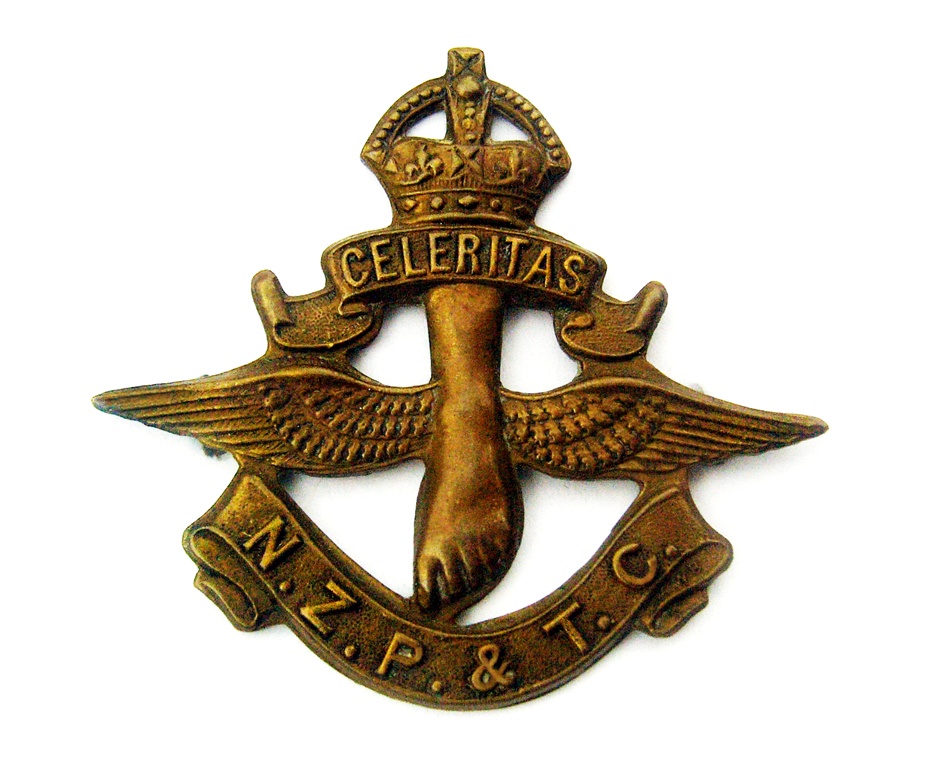
The cap badge of the New Zealand Post and Telegraph Corps features a winged foot and bears the corps’ Latin motto, ‘Celeritas’ (‘swiftly’).
The Post and Telegraph (P&T) Corps was created in October 1911 as part of New Zealand’s new Territorial Force, in which part-time service was compulsory for most teenage boys and young men. The P&T Corps was one of several specialist units. It was manned by Post and Telegraph Department staff who were liable for military service under the 1909 Defence Act. The corps was organised as two battalions (one for each island) split into 13 companies. Staff members aged between 14 and 17 served in the Post and Telegraph Senior Cadets, which made up one-third of the corps’ total establishment (nominal strength) of about 1500.
Until 1914 the P&T Corps mostly drilled as infantry and provided postal, telegraph and telephone services at the annual military training camps around the country. In mid-1914 the corps was designated part of the New Zealand Engineers and plans were made for more specialised training. A camp focusing on technical skills was held at Waikanae for officers and NCOs in March 1915. But by then the role of the corps – and of the Territorial Force as a whole – had changed.
Enlistment in the New Zealand Expeditionary Force formed on the outbreak of war to fight overseas was voluntary until 1916, so the Territorial Force became in effect a feeder unit for the NZEF. The companies of the P&T Corps were led by men who were too old or unfit for active service, and staffed mainly by senior cadets and young men aged under 20, the minimum age for overseas service. Meanwhile, from August 1914 P&T Department staff enlisted in all branches of the NZEF, not just postal and signals units.
During the war, part-time service in the P&T Corps gave the young male staff of the department some basic military training in preparation for what was to come when they turned 20 and volunteered for (or, in some cases from late 1916, were conscripted into) the NZEF. Infantry drill was complemented where possible by specialist training. Much depended on the skills and interests of officers. The Auckland company, for example, entertained the public at patriotic fundraising events with exhibitions of bayonet fighting, wrestling and jiu-jitsu. It is unclear whether these skills were later of any practical use overseas.
After the war the Territorial Force was reduced in size. As part of this exercise, the New Zealand Post and Telegraph Corps was formally merged into the New Zealand Signals Corps (within the New Zealand Engineers) on 1 June 1921.

Community contributions